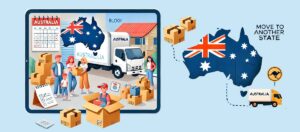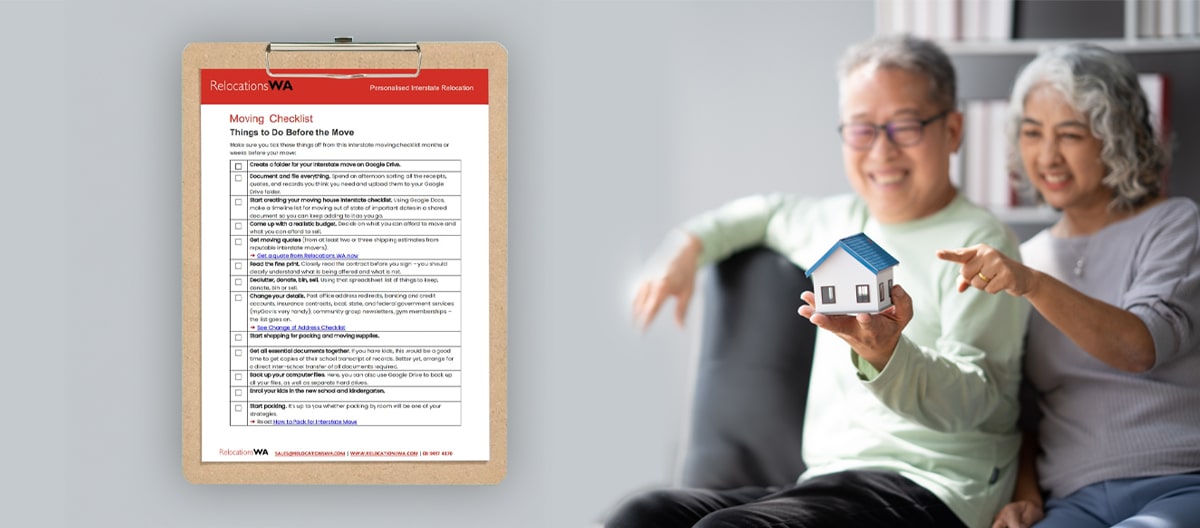
Your Comprehensive Moving-Into-a-New-House Checklist
Moving into a new house in Australia (or anywhere, for that matter) can be an exciting adventure. You could be moving for a new job or assignment, a change of scene, personal reasons, or because you have a newly acquired property.
The thought of moving into a new home and neighbourhood can be filled with anticipation and the promise of fresh beginnings. The excitement of exploring uncharted territory, decorating a new space, and making it uniquely yours is palpable.
The prospect of meeting new neighbours, local discoveries, and a change in routine is invigorating. Every part of the new household has the potential to create cherished moments with your loved ones. Moving to a new home is the start of a new chapter, and the excitement you feel is a beautiful prelude to the possibilities that lie ahead.
Of course, moving to a new house is also a process that comes with some level of stress and its fair share of challenges. To help you navigate this transition with ease, we’ll delve into a comprehensive moving checklist tailored specifically for you.
You might be wondering, ‘Why do I need a moving-into-a-new-house checklist?’
Well, think of it as your trusty roadmap to a smoother, stress-free transition to your new home.

By following a well-thought-out checklist for moving into a new house, you’ll not only stay organised, but you’ll also save time, effort, and money, and avoid potential pitfalls. And with Australia’s diverse climates and regional differences, planning ahead is essential for a seamless transition.
Let’s get started!
Planning Your Move
Pre-move planning is a paramount aspect of your checklist for moving into a new house as it lays the foundation for a successful home relocation.
Setting a budget, scheduling services, and adhering to timelines are vital for minimising unexpected challenges and financial burdens. Planning reduces last-minute chaos and provides peace of mind.
1. Set a timeline
In Australia, the weather can vary significantly from one region to another, so it’s crucial to determine your move-in date with these regional differences in mind.
For example, if you’re moving to the tropical north (like Queensland or parts of Western Australia), you’ll want to avoid the wet season when heavy rains are common. In the southern regions (e.g., New South Wales, Tasmania, Victoria), consider the milder seasons for a more comfortable move.
Also, create a moving schedule that accounts for public holidays and local events. Public holidays can affect the availability of services, so plan your move around these dates. Additionally, consider local events, like festivals or parades, that might impact traffic and accessibility to your new home.
2. Make time for budgeting and financial planning
When estimating moving costs, consider the:
- Distance of your move (are you moving locally or need interstate removal services?)
- Size of your household
- Volume of your possessions
- Additional services you may require during the move (e.g., packing, cleaning, pet transport, etc.)
Keep in mind that the cost of living can vary greatly between cities and regions, so tailor your budget to the specific location you’re moving to.
Setting a budget is essential to ensure you don’t overspend during the move. Take into account not only the moving expenses but also the cost of living in your new Australian neighbourhood. Be prepared for variations in housing, utilities, and transportation costs.
If you need financing for your new home, explore Australian mortgage options. Different banks and lenders in Australia offer various mortgage products. Research and compare interest rates, terms, and conditions to secure the most suitable financing for your needs.
3. Find reliable, professional movers to partner with
Researching moving companies in Australia is a fundamental step in your moving-to-a-new-house checklist.
- Look for reputable, local removalists with a strong track record.
- Consider reading customer reviews and asking for recommendations from friends or colleagues who have recently moved.
- Request quotes from multiple local movers to help you compare costs and services.
Once you’ve selected a moving company, it’s time to book their services. Be sure to schedule well in advance, especially if you’re moving during the peak season, which typically falls during summer.
Confirm that your chosen moving company provides the necessary transit protection coverage. Accidents can happen, and having the right coverage in accordance with Australian regulations will provide you peace of mind throughout the move.
Decluttering and Downsizing
It may not be something you look forward to, but the process of decluttering and downsizing is essential for a house move as it streamlines the process, reducing the volume of items to be packed and transported. This not only saves time and money but also helps in optimising the new space.
1. Sort and organise belongings
When preparing for your move to a new house, start by categorising your belongings into four main group of items to:
- Keep
- Donate
- Sell
- Discard
Take the size and layout of your new home into account.
If you’re moving from a larger home to a smaller one, downsizing might be necessary. Consider what furniture and belongings will fit comfortably in your new space and what may need to be sold or donated to ensure a smooth transition. While you’re at it, also consider whether you want the furniture disassembled beforehand or not.
2. Hold a garage sale or make donations
Planning a garage sale can be a great way to lighten your load before the move while also saving money for your move and adhering to Australian regulations.
Check with your local council for any permits or rules regarding garage sales in your area. Advertise your sale to attract local buyers and make sure to comply with any COVID-19 restrictions, if applicable.
Giving back to the community can be a rewarding part of your move, especially since charitable organisations are always in need of goods and clothing donations.
Reach out to establishments like the Red Cross, Lifeline, or local op-shops. Consider donating to local charities such as the Salvation Army, Vinnies, or The Smith Family. They often have drop-off points where you can contribute to their noble causes.
Hazardous materials, like old paint or batteries, require special handling. Local waste management facilities typically have specific instructions on the correct disposal of hazardous waste. Ensure you properly dispose of these materials according to Australian environmental guidelines.
3. Organise your packing essentials
To ensure you’re well-prepared for your move to a new home, purchase your packing supplies locally.
Visit nearby home improvement stores or stationery shops to acquire:
- Sturdy moving boxes or cartons
- Packing tape
- Bubble wrap
- Packing paper
- Permanent markers
- Box cutters and scissors
Buying locally helps support Australian businesses and ensures you have access to the right materials.
Labelling your boxes and creating an inventory is a crucial step to maintain order during the move.
Use a consistent system, like labelling boxes with the name of the room they belong to and a brief description of the contents. This will save you time and effort when unpacking in your new house.
Address and Utility Transfer
Notify the Australian Post office of your change of address to ensure your mail is forwarded to your new location. This can be done online or by visiting your local post office branch. Update your mailing address with government agencies, banks, insurance companies, and any subscriptions you may have.
Informing your friends and family of your new Australian address is equally important. Sharing your updated contact details helps maintain your social connections and ensures you stay in the loop with loved ones.
Reach out to your utility service providers well in advance to notify them of your move. This includes electricity, gas, water, and internet services. Scheduling the disconnection and reconnection of these services should align with your moving dates. Compliance with Australian utility regulations is key to a seamless transition.
Check with your utility providers about any specific procedures they may have for transferring services to a new address. It’s important to ensure a smooth transition and avoid any service interruptions during your move in Australia.
Packing and Loading
Planning for packing and loading is a critical aspect of your new home checklist.
It ensures that belongings are packed securely, minimising the risk of damage during transit.
Proper packing techniques save time and effort during unpacking. Meantime, efficient loading with attention to safety prevents accidents and ensures a smooth start to the journey to a new home.
1. Set a packing strategy
When packing for your move, it’s a good idea to tackle one room at a time. This approach helps keep things organised and makes unpacking more straightforward. Also, consider the Australian climate. If you’re moving to a hot and humid area, make sure to pack items like electronics and documents with extra care to protect them from moisture.
Make sure to:
- Invest in quality moving boxes and packing materials to ensure your belongings remain secure during transit.
- Not overload boxes, and use bubble wrap or packing paper to cushion fragile items.
- Label boxes clearly with their contents and the room they belong in to simplify the unloading process.
- Remember that fragile items, such as dishes, glassware and delicate decor, need special attention.
Wrap sensitive items like art pieces and breakable things carefully in packing paper and use bubble wrap, or stuffed toy animals and small cushions to create a protective layer. Mark their boxes as ‘fragile’ and store them in a safe place in the moving truck, away from heavy items.
2. Put essential moving day supplies together
Before moving into a new home, it’s wise to prepare an essentials box that you can access immediately upon arrival. In this box, include Australian emergency numbers like 000 for emergencies and 112 for mobiles. Also, keep your new address and contact information readily available.
As you embark on your moving day, be sure to pack snacks and drinks suitable for the Australian climate. The weather can be unpredictable, and having refreshments on hand can help keep your energy up during the move.
Keeping a toolkit handy is a smart move, especially when moving to a new house. You might need to perform minor fixes or adjustments upon arrival. A basic toolkit with essential items like screwdrivers, pliers, and a hammer can come in handy.
3. Plan for loading and transportation
Safety is paramount during the loading process of your move. Follow local Australian safety guidelines for securing items in the moving truck. Use straps or ropes to prevent items from shifting during transit. Be mindful of the weight distribution to avoid imbalances that can affect the stability of the vehicle.
Conduct a pre-departure check by ensuring all your belongings are loaded onto the truck and are accounted for. This is especially important as the road conditions and terrain can vary significantly from place to place. Make a checklist and tick off items as they are loaded to minimise the risk of leaving anything behind.
Unloading and Settling In
When moving into a new house, the process of unloading and settling in is vital for making your new address feel like home.
1. Have an unpacking strategy
Upon arriving, prioritise unpacking items for essential rooms first.
Start with your kitchen, bedrooms, and bathrooms to ensure you have the necessities readily available.
Avoid overloading yourself with unpacking. Take it one step at a time, and don’t rush the process. A gradual unpacking approach allows you to settle in smoothly and make your new Australian house feel like home at your own pace.
2. Consider optimum furniture placement
Measure and plan the arrangement of your furniture with your home layout in mind. Ensure that your furniture fits comfortably and enhances the functionality of each room. Experiment with different layouts to find what works best for you and your family in the new space.
If it happens that your furniture doesn’t fit well in your new home layout, you may need to keep it in storage or put it up for sale, and get a new set that’s more in tune with your new home needs.
Consider the flow of each room to optimise comfort. Arrange furniture so that there’s enough space to move around freely. This is especially important in Australia, where many homes have open layouts to maximise natural light and ventilation.
3. Prioritise home safety
Installing necessary security measures is essential when moving into a new home.
- Make sure your locks, alarms, and other security features are in good working order.
- Consult local security experts to assess and reinforce your home safety.
- Check smoke detectors and alarms, following Australian safety standards. Replace batteries if needed to ensure they’re fully operational.
- Locate emergency exits according to Australian building codes. Familiarise yourself with the quickest way out in case of any unforeseen emergencies.
Home Maintenance and Personalisation
After your move into your new home, maintaining and personalising (including making a list of things to buy for a new house) it play a crucial role in the post-move phase.
1. Schedule a home inspection
After your move, conduct a thorough home inspection. Check for any damages that may have occurred during the move. Inspect the walls, floors, and any valuable items. Document any issues and take photographs for Australian insurance purposes. This documentation can be crucial in case you need to file a claim.
2. Personalise your space
To truly make your new house feel like home, consider hanging curtains and blinds that are suited to the local climate. In Australia, we experience a wide range of weather conditions, so install window coverings that provide both privacy and protection from the elements. Choose curtains and blinds that not only enhance your interior design but also provide practical benefits, like insulation.
Adding a touch of personalization with an Australian flair can be a delightful way to make your home unique. Incorporate local artwork, indigenous elements, or even Australian flora and fauna motifs into your décor.
These personalised touches will not only reflect your deep connection to the country but also create a warm and inviting atmosphere.
Post-Move Follow-Up
Your checklist of things to do when moving house doesn’t end with finally making your new abode truly your own with personal touches.
A post-move follow-up is an often overlooked yet highly important phase of a house move. It’s the final step in ensuring that your transition to a new home is not only successful but also a happy one.
1. Thank your movers
Showing appreciation to your movers is a considerate gesture. Providing feedback and reviews helps local removalists maintain their high standards of service. Sharing your experience can also guide others in choosing reliable movers for their own relocation plans.
If you are satisfied with the services provided by your moving crew, consider tipping. It’s a way of acknowledging the hard work and professionalism of the team that helped you through your move.
2. Update emergency contacts
After your move is an ideal time to update your emergency contact information. Ensure your contact list is current and in accordance with Australian emergency services.
Make sure to include local contacts for medical emergencies, fire, and police. Quick access to these numbers can be a lifesaver in critical situations.
Familiarise yourself with nearby medical facilities and emergency services in your new neighbourhood. Knowing the locations of hospitals, clinics, and emergency response centres is essential for your safety and peace of mind. Additionally, understanding the local healthcare system and procedures can be invaluable if you ever need medical assistance.
3. Explore your new community
To truly settle into your new neighbourhood, take the time to explore the area. Meeting your new neighbours is an excellent way to establish a sense of community.
Australians are known for their friendliness and neighbourly spirit. Knock on a neighbour’s door, introduce yourself, and perhaps even join local community events or groups. Building a sense of belonging with the people in your new neighbourhood can make your new house feel like a true home.
Tackle the Challenges of Moving to a New Home
A comprehensive moving checklist is an invaluable tool for anyone relocating to a new home in Australia — or wherever you’re located.
And it’s not just a list; it’s your trusted guide to a successful move. From the planning stages to unpacking in your new home, this checklist ensures that no crucial detail is overlooked. It minimises stress, maximises efficiency, and helps you stay organised throughout the process.
If you’re feeling overwhelmed with the thought of your move, you can also depend on our help at Relocations WA.
Please contact us for a quick chat or to get a customised moving quote today!
Moving house?
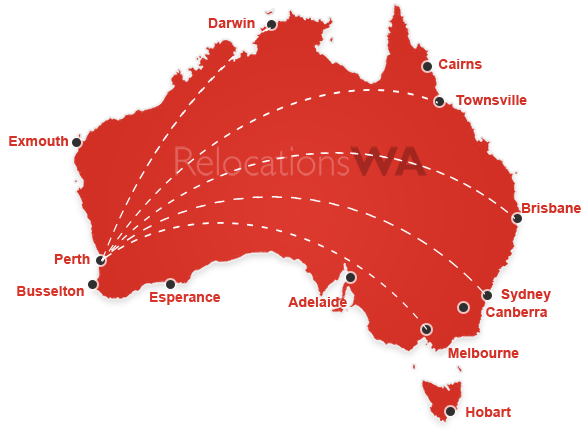
You might also like
How to Plan a Move to Another State
Moving is never easy, whether down the hall, across town, or in the country. But generally speaking, the farther you move, the more details you must worry about. Before you move out of…
Choosing Between DIY Truck Hire for an Interstate Move vs Hiring a Removalist
Moving can be exciting yet stressful. However, relocating interstate is a totally different beast – especially when it comes to moves across Australia. An interstate move requires careful planning, organisation, and decision making.…
Truck Sizes in Australia: Your Essential Guide for Moving
A house move can be both exciting and overwhelming, especially when it comes to choosing the right removalist truck size for your move in Australia. After all, knowing truck sizes is important regardless…

